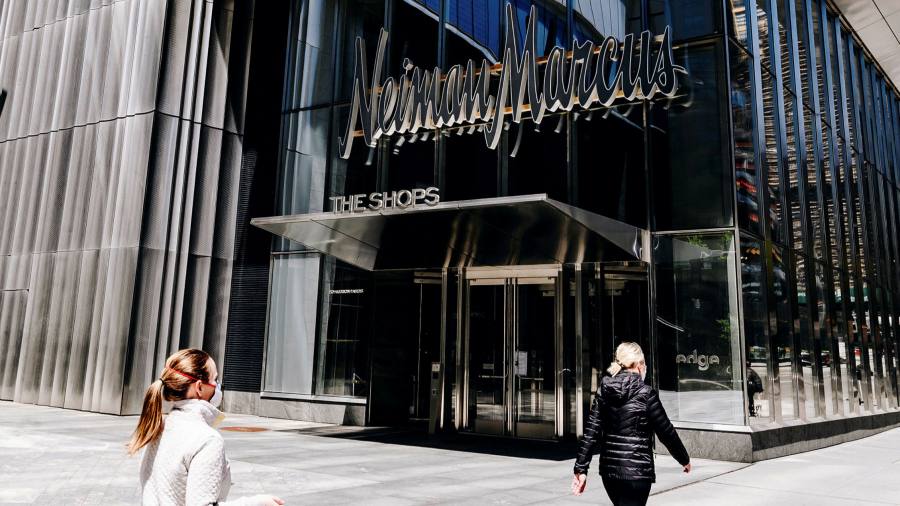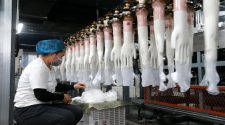Neiman Marcus, the upscale department store chain that began by bringing high fashion to downtown Dallas in 1907, has filed for bankruptcy protection, becoming the latest retailer to be tipped over the edge by the coronavirus shutdown.
The private equity-backed company, which staggered on with a heavy debt burden for years despite its struggles to compete in the age of ecommerce, finally succumbed after business ground to a halt in recent weeks.
The Chapter 11 filing, which comes just three days after the bankruptcy of preppy clothing chain J Crew, is the latest sign that restrictions to curb the pandemic are accelerating the demise of already struggling businesses.
In a statement, Geoffroy van Raemdonck, chief executive, maintained Neiman Marcus had been making “solid progress” in adapting to the rise of online shopping but Covid-19 had placed “inexorable pressure” on the business.
He said the retailer would emerge in a stronger position from the bankruptcy, which it plans to use to eliminate $4bn worth of debt.
Creditors had committed to provide $1.43bn in financing to help the business through the restructuring and its aftermath, and would become majority owners, the company said. Holders of two-thirds of its debt were backing the arrangement.
However, the filing with the US Bankruptcy Court for the Southern District of Texas also leaves the door open to a sale. Hudson’s Bay Company, owner of Saks Fifth Avenue, has expressed an interest in buying the company, according to people familiar with the matter.
Neiman’s bankruptcy filing puts into further doubt the future of 14,000 employees, many of whom had already been furloughed.
The restructuring also casts a shadow over the retail property market in several US cities. The chain’s locations include Beverly Hills, Boca Raton and New York’s Hudson Yards development, where it opened a 188,000 square foot store featuring an eyebrow-shaping lab, digital fitting rooms and fine dining to a fanfare last year.
As well as the namesake stores, the group owns Bergdorf Goodman, the luxury department store based on Manhattan’s Fifth Avenue. High-end stores in and around New York’s premier shopping district, including Henri Bendel, have already closed in recent months. Barneys New York filed for Chapter 11 protection last year.
Neiman Marcus’s history stretches back to when Dallas was still a cattle and cotton town. Herbert Marcus, his sister Carrie Marcus Neiman and her husband Al Neiman started a women’s clothier that became renowned for its lavish decor and attentive service.
Style-conscious local ladies frequented the retailer during the Texas oil boom, and Dallas elites knew it as simply “the store”.
Annual Christmas catalogues showcased outlandish “his and her” gifts. Items in recent years have included a submarine, a private Elton John concert and a $73,000 mobile phone adorned with diamonds and 18-carat gold.
The retailer’s founding family sold out in the 1980s, and Neiman was later saddled with debt in a 2005 leveraged buyout by TPG and Warburg Pincus and subsequent sale in 2013 to Ares and the Canada Pension Plan Investment Board.
Neiman Marcus is the latest addition to a list of private-equity backed bankruptcies in retail, which includes Toys R Us, Gymboree and Payless ShoeSource as well as J Crew.
Like other clothing retailers and department store chains, Neiman Marcus was hurt by the rise of ecommerce, while the scale of its debts undermined its ability to compete with online specialists such as Yoox Net-a-Porter and Farfetch.
Coronavirus is compounding structural pressures in retail, which are particularly intense for department stores. JCPenney missed an interest payment to bondholders last month, while Macy’s has also said it is exploring options to strengthen its capital structure.
Kirkland & Ellis is serving as legal counsel to Neiman Marcus, with Lazard its investment banker and Berkeley Research Group its financial adviser.


















